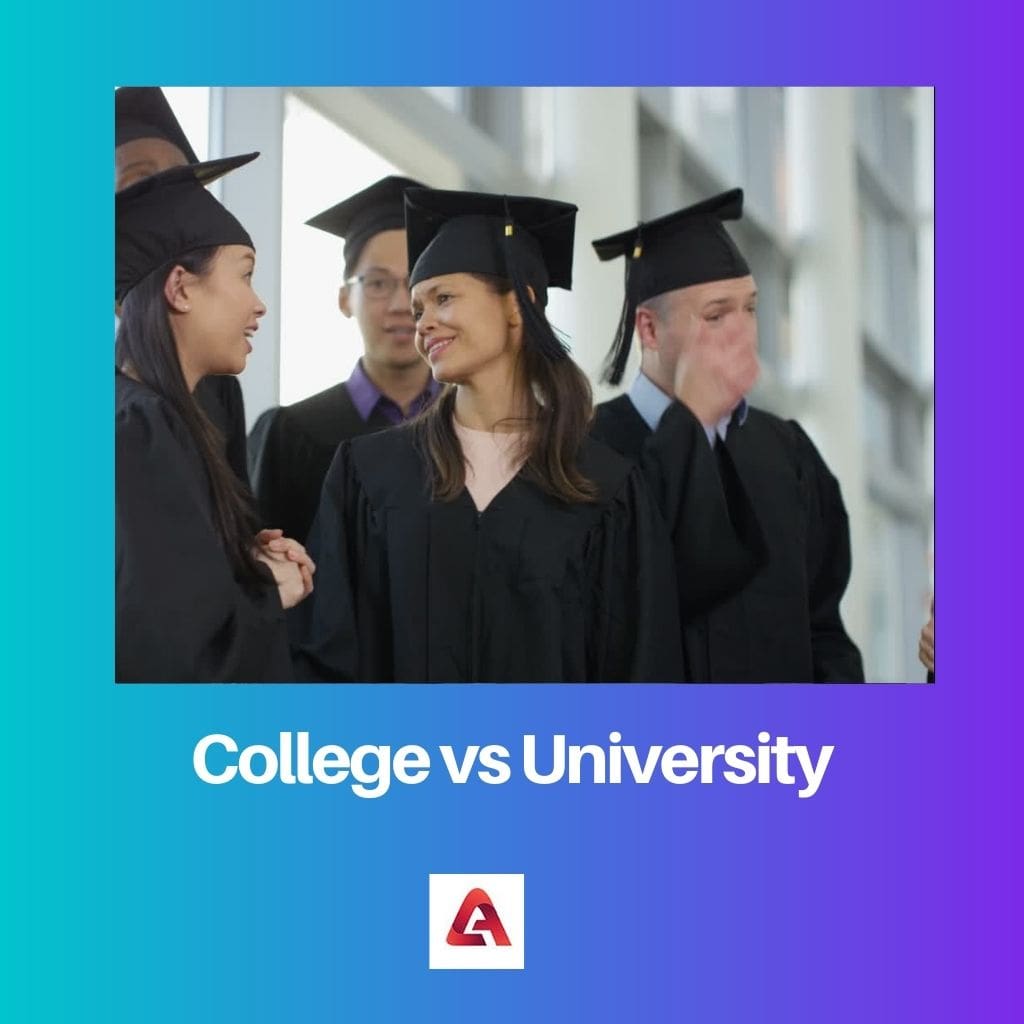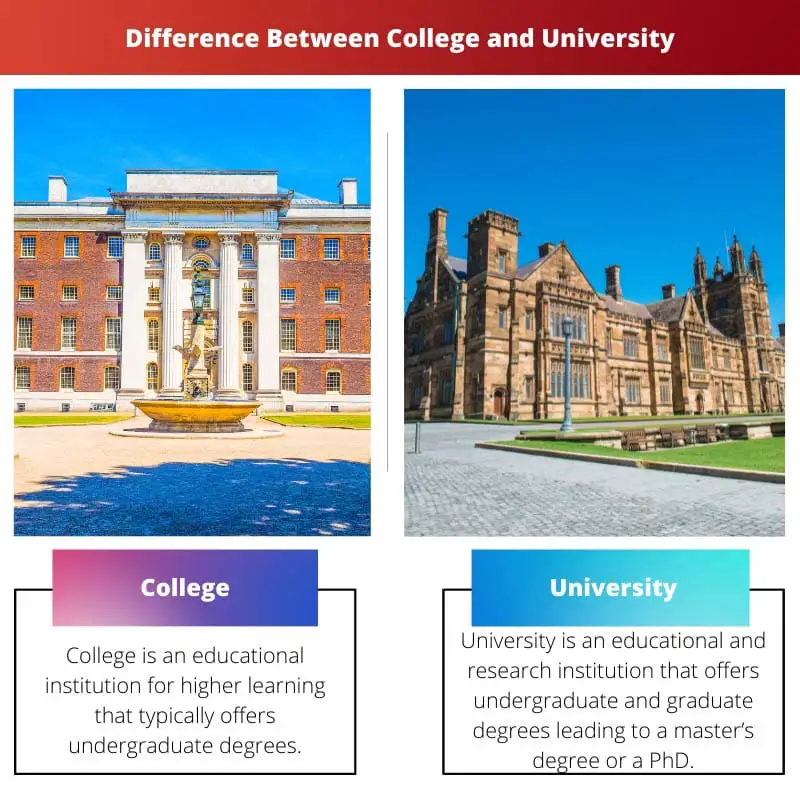In general, a college typically refers to an institution that offers undergraduate degrees, often with a narrower focus on specific fields of study. Universities, on the other hand, encompass colleges and additionally provide graduate programs leading to advanced degrees, along with extensive research opportunities and a broader range of academic disciplines. While colleges may offer a more intimate learning environment with smaller class sizes and closer student-faculty interactions, universities often boast larger campuses, diverse student bodies, and greater resources for academic and extracurricular pursuits.
Key Takeaways
- Colleges offer undergraduate degrees, while universities offer both undergraduate and graduate degrees.
- Colleges are smaller and more focused on undergraduate education, while universities are more prominent and offer a more comprehensive range of academic programs.
- Colleges may have a more community atmosphere, while universities offer more resources and research opportunities.
College vs University
A college is an institution that focuses on undergraduate education and offers associate’s or bachelor’s degrees. A university is an institution that offers undergraduate, graduate, and postgraduate degrees. A University has various departments and is a more comprehensive institution than a college.

Though it is a fact that exceptions are always there, that’s why not all colleges and universities will have the same traits.
Some universities may be tiny, while some colleges may have extensive research facilities available for students.
Because of this, sometimes the line of difference between the two is not well defined.
Comparison Table
| Feature | College | University |
|---|---|---|
| Focus | Primarily undergraduate education (Bachelor’s degrees) | Offers both undergraduate and graduate programs (Master’s, PhDs) |
| Size | Generally smaller student body and campus | Larger student body and campus, often with multiple colleges or schools under one umbrella |
| Academic Programs | Often specialize in specific areas like liberal arts, fine arts, or technology | Offer a wider range of academic programs across various disciplines |
| Research | May have limited research opportunities | Often have extensive research programs and facilities |
| Faculty | Professors may have a closer relationship with students | Faculty may be more specialized in their research areas and less focused on undergraduate teaching |
| Student Life | Strong sense of community and close-knit atmosphere | More diverse student body and wider range of clubs and activities |
| Cost | Tuition can vary, but may be slightly lower than universities | Tuition can be higher due to the wider range of programs and resources offered |
What is College?
A college is an educational institution that typically offers undergraduate programs leading to bachelor’s degrees. These institutions can vary in size and focus, ranging from small liberal arts colleges to larger universities with multiple colleges within them.
Characteristics
- Undergraduate Focus: Colleges primarily focus on undergraduate education, providing students with foundational knowledge and skills in their chosen fields of study. They offer bachelor’s degrees across various disciplines such as arts, sciences, engineering, and business.
- Specialized Programs: Many colleges specialize in specific areas of study, offering tailored programs designed to meet the needs of students interested in particular subjects. This specialization allows for in-depth exploration and expertise development within a specific field.
- Small Class Sizes and Personalized Attention: Compared to universities, colleges often have smaller class sizes, fostering a more intimate learning environment. This enables closer interactions between students and professors, facilitating personalized attention and mentorship opportunities.
- Community Atmosphere: Colleges often cultivate a strong sense of community among students, faculty, and staff. With smaller student populations, students may have more opportunities to engage in extracurricular activities, participate in campus events, and form close-knit relationships with peers.
Examples
- Liberal Arts Colleges: Institutions like Williams College, Amherst College, and Swarthmore College emphasize a broad-based liberal arts education, focusing on critical thinking, communication skills, and interdisciplinary learning.
- Specialized Colleges: Institutions like the Rhode Island School of Design (RISD) and the Curtis Institute of Music offer specialized programs in the arts and music, respectively, catering to students with specific career aspirations.
- Community Colleges: These institutions, such as Santa Monica College and Borough of Manhattan Community College, provide affordable two-year programs that serve as pathways to higher education or entry into the workforce.

What is University?
A university is an institution of higher education that offers undergraduate, graduate, and often professional programs across a wide range of academic disciplines. Unlike colleges, universities typically consist of multiple colleges, schools, or faculties, each specializing in different areas of study.
Characteristics
- Comprehensive Academic Offerings: Universities provide a broad spectrum of academic programs, including undergraduate degrees, graduate degrees (master’s and doctoral), and professional degrees (such as law, medicine, and business). This comprehensive range of offerings allows students to pursue advanced studies and specialized training in various fields.
- Research and Innovation Hub: Universities are hubs of research and innovation, conducting groundbreaking research across diverse disciplines. They often house research centers, laboratories, and institutes where faculty, researchers, and students collaborate on cutting-edge projects, contributing to advancements in knowledge, technology, and society.
- Large and Diverse Student Population: Unlike colleges, universities typically have larger student populations, attracting students from various backgrounds, cultures, and countries. This diversity enriches the academic environment, fostering cross-cultural understanding, collaboration, and networking opportunities.
- Faculty Expertise and Resources: Universities boast a highly qualified faculty comprising experts and scholars in their respective fields. These faculty members not only teach but also engage in research, publishing scholarly works, and contributing to academic discourse. Additionally, universities offer extensive resources such as libraries, academic support services, and extracurricular facilities to enhance the learning experience.
Examples
- Research Universities: Institutions like Harvard University, Stanford University, and Massachusetts Institute of Technology (MIT) are renowned for their emphasis on research excellence across various disciplines, driving innovation and discovery.
- Comprehensive Universities: Universities like University of California, Berkeley, University of Michigan, and University of Toronto offer a wide range of academic programs, including undergraduate, graduate, and professional degrees, catering to diverse student interests and career goals.
- Specialized Universities: Institutions such as Johns Hopkins University (known for its medical programs) and Carnegie Mellon University (renowned for its computer science and engineering programs) excel in specific areas of study, attracting students seeking specialized training and expertise.

Main Differences Between College and University
- Degree Offerings:
- Colleges typically offer undergraduate programs leading to bachelor’s degrees.
- Universities provide undergraduate, graduate, and professional programs, including master’s, doctoral, and professional degrees.
- Research Opportunities:
- Universities often prioritize research and innovation, with faculty and students actively engaged in research projects across various disciplines.
- Colleges may offer limited research opportunities, focusing more on undergraduate teaching and learning.
- Scope of Academic Offerings:
- Colleges may specialize in specific fields of study, offering tailored programs in areas such as liberal arts, sciences, or vocational training.
- Universities offer a broader range of academic disciplines and programs, encompassing diverse areas of study and providing opportunities for advanced specialization.
- Size and Student Population:
- Colleges tend to have smaller student populations and class sizes, fostering a more intimate learning environment and closer student-faculty interactions.
- Universities typically have larger student bodies, attracting students from diverse backgrounds and offering a wider array of extracurricular activities and resources.
- Faculty Expertise:
- Universities often boast a highly qualified faculty with expertise in their respective fields, engaging in research, publishing scholarly works, and contributing to academic discourse.
- Colleges may have faculty members focused primarily on teaching, with fewer opportunities for research and academic publications.
- Campus Environment:
- College campuses may be smaller and more tightly knit, fostering a sense of community among students and faculty.
- University campuses can vary in size and may include multiple colleges, schools, and research facilities, offering a more expansive and diverse campus environment.
